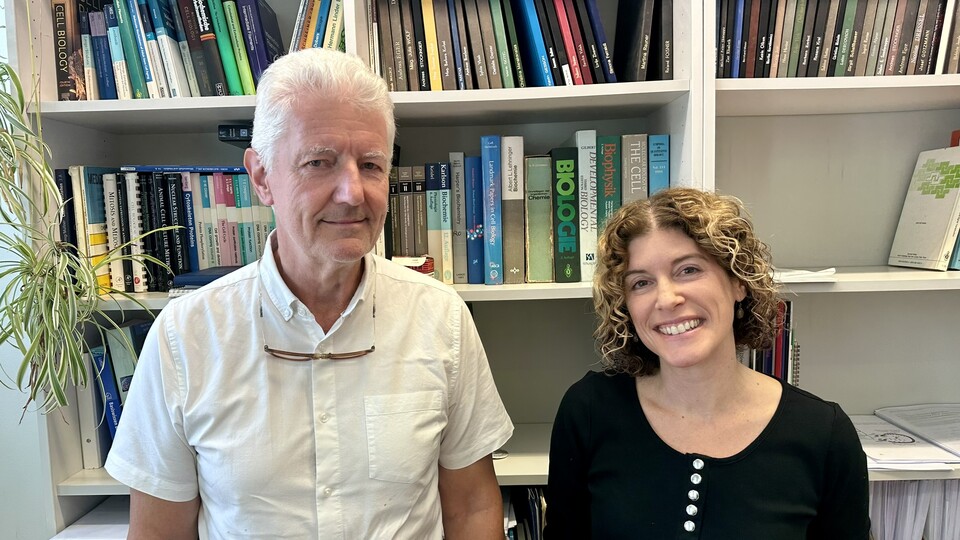


The nuclear lamina maintains the structural integrity of the nucleus and regulates gene expression. By binding to and crosslinking transcriptionally inactive heterochromatin, peripheral lamins that are part of the nuclear lamina silence gene expression in these regions. “Interestingly, about 10 percent of these lamins exist in a soluble form within the nucleus, exhibiting different properties and forming dynamic complexes with lamin-associated polypeptide 2 alpha (LAP2α)”, explains Perutz group leader Roland Foisner. The Foisner lab’s study aimed to understand how LAP2α, in complex with soluble lamins, impacts gene expression, and to rationalize the molecular basis of disease-associated mutations found in so-called laminopathies.
The researchers demonstrated that LAP2α is essential for regulating the lamin pool and ensuring proper muscle cell differentiation. “LAP2α prevents lamin A from spreading into transcriptionally active euchromatin, where it would otherwise create crosslinks leading to gene silencing”, says co-corresponding author and postdoc Nana Naetar. “Our results show that LAP2α depletion leads to an accumulation of lamins at euchromatin, which is characterized by active histone marks.” Lamin accumulation on myogenic genes in the absence of LAP2α was correlated with a failure to differentiate properly. Also, impaired muscle tissue formation in the organism is seen in LAP2α mutants, suggesting a correlation between the two.
Similar phenotypes have been observed in laminopathies, diseases caused by mutations in nuclear lamina proteins, suggesting that dysregulation of chromatin structure and its consequences for gene expression may be the cause of these diseases. Indeed, the premature aging disease Hutchison-Gifford Progeria Syndrome is caused by a loss of the nucleoplasmic pool of lamin A. The authors’ findings therefore reinforce the importance of a mobile pool of lamins to regulate proper gene expression.
DOI: 10.1093/nar/gkae752